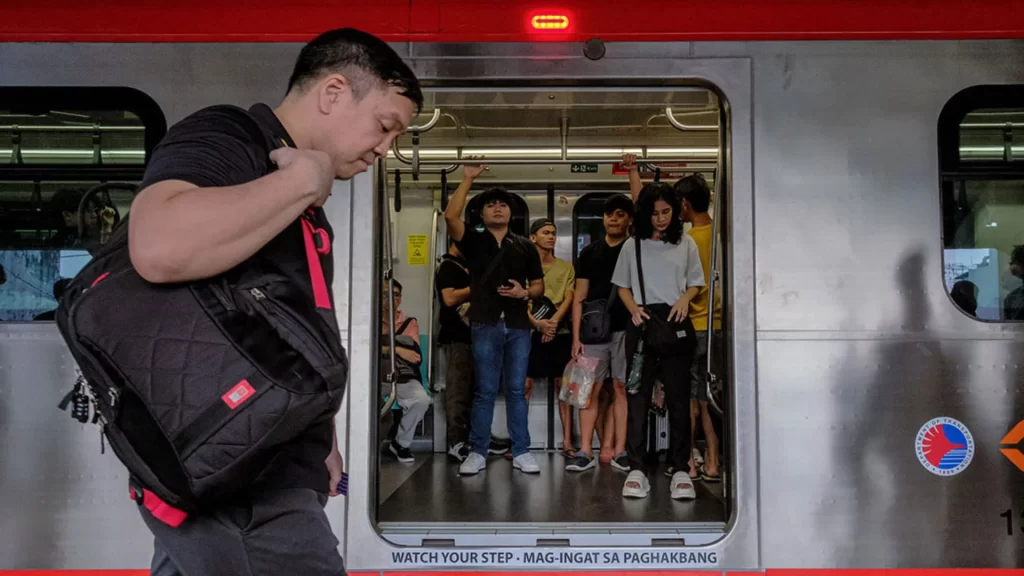There has been a lot of talk about a more sustainable future in the Philippines. Policies have been developed by the government to ensure sustainability in resource management. The private sector has also taken the lead in designing and implementing sustainability projects in their respective business operations. And yet there seems to be some consensus that we are far from ensuring a sustainable future — especially in the transport sector.
With a population of over 100 million people spread over more than 7,000 islands, transportation infrastructure is often inadequate or inaccessible to many people. The country’s transportation sector is a significant contributor to greenhouse gas emissions, with the transportation sector accounting for around 35% of the country’s energy-related emissions. It does not take rocket science to conclude that the current transportation system in the Philippines is not sustainable as it continues to be heavily reliant on private cars, which contribute to air pollution and traffic congestion.
There are several challenges that the Philippines faces in terms of sustainable transportation.
One of the challenges is the lack of an adequate public transportation infrastructure. Many people rely on privately owned vehicles, which are often inefficient and polluting. The Philippines has a relatively underdeveloped public transportation system, which makes it difficult for people to get around without a car. This is especially true in rural areas, where public transportation is often non-existent. A study by the World Bank found that the Philippines could save $1.4 billion per year by investing in public transportation.
However, there are initiatives underway to address this issue, such as the Bus Rapid Transit (BRT) system in Metro Manila. The BRT system is designed to provide a fast, efficient, and environmentally friendly transportation option for commuters. The system includes dedicated bus lanes, modern buses, and other amenities to make commuting by public transportation more attractive. According to a study by the University of the Philippines, the BRT system has the potential to reduce carbon emissions by up to 200,000 metric tons annually.
Other examples of sustainable transportation include:
• Public transportation: This includes buses, trains, subways, and streetcars. Public transportation is a great way to reduce emissions and traffic congestion.
• Walking and biking: These are two of the most sustainable forms of transportation. They are also great for our health.
• Carpooling and vanpooling: These are great ways to reduce the number of cars on the road.
• Telecommuting: This is the practice of working from home. Telecommuting can help to reduce traffic congestion and pollution.
• Shared mobility: This includes services like Grab, Joyride and the like. These services allow you to use a vehicle when you need it, without having to own one.
• Electric vehicles: Electric vehicles produce zero emissions. They are becoming more and more affordable, and they are a great way to reduce your environmental impact.
Despite the challenges, there are several reasons to be optimistic about the future of sustainable transportation in the Philippines. The government has made a commitment to investing in public transportation with the goal of reducing greenhouse gas emissions from transportation by 20% by 2030. There is also growing awareness of the need for sustainable transportation among the public.
The Philippines has several examples of sustainable transportation. In the city of Makati, for example, there is a well-developed network of pedestrian walkways and bike lanes. The city also has a number of public transportation options, including buses, jeepneys, and taxis. In the city of Marikina, there is an extensive network of bike lanes that is used by both residents and tourists. The city also has several public transportation options, including buses, jeepneys, and tricycles.
Here are some additional examples of sustainable transportation in the Philippines:
• The city of Cebu has a bike-sharing program that allows residents and visitors to rent bicycles for a fee.
• The city of Iloilo has a river ferry service that connects the city’s different districts.
• The province of Palawan has electric vehicles that are used for public transportation.
Another example of a sustainable transportation solution that is being adopted in the Philippines is the use of electric vehicles. Electric vehicles produce zero emissions, and they are becoming more and more affordable. The government is providing subsidies to help people buy electric vehicles, and there are a number of charging stations being installed around the country.
Another initiative is the public utility vehicle (PUV) modernization program, which aims to replace traditional jeepneys with electric vehicles. Jeepneys are a common mode of public transportation in the Philippines, but they are often poorly maintained and emit significant amounts of pollutants. The PUV modernization program seeks to address these issues by providing a cleaner, more efficient alternative. According to a study by the Asian Development Bank, the PUV modernization program has the potential to reduce carbon emissions by up to 260,000 metric tons annually. Additionally, the program provides economic benefits by creating jobs in the production and maintenance of the vehicles.
Another promising initiative in the Philippines is the Bike-Friendly Cities program, which aims to promote cycling as a sustainable mode of transportation. The program includes infrastructure improvements such as bike lanes, parking facilities, and other amenities to make cycling safer and more convenient. This initiative has the potential to provide a low-cost, low-emission transportation option to many people who may not have access to traditional modes of transportation.
A study by the Institute for Transportation and Development Policy found that investing in cycling infrastructure can provide a significant return on investment. For every dollar invested in cycling infrastructure, up to $24 in economic benefits can be generated. Additionally, promoting cycling can have a positive impact on public health by encouraging physical activity and reducing air pollution.
Corollary to this is use of bike-sharing programs being adopted in some cities in the Philippines. Bike-sharing programs allow people to rent bicycles for a fee, which makes it easy and affordable to get around without a car. There are several bike-sharing programs operating in the Philippines, and the government is providing funding to expand these programs.
Other initiatives that have the potential to provide multiple benefits, including reducing emissions, improving air quality, and creating economic opportunities are the following:
• Electric tricycles: In addition to electric jeepneys, the Philippines is also promoting the adoption of electric tricycles, which are a common mode of transportation in many rural areas. The Department of Energy has launched several initiatives to promote the adoption of electric tricycles, including a loan program to help tricycle operators purchase electric tricycles.
• Green energy charging stations: As electric vehicles become more prevalent in the Philippines, there is a need for more charging infrastructure. Several companies and organizations have launched green energy charging stations that use renewable energy sources like solar power to charge electric vehicles. These charging stations not only provide a clean and sustainable way to charge electric vehicles but also promote the adoption of renewable energy sources.
In addition to these examples, there are several other initiatives in the Philippines aimed at promoting the adoption of more sustainable transportation vehicles, including tax incentives for electric vehicles, research and development programs, and awareness campaigns. These initiatives are crucial to achieving a more sustainable transportation sector in the Philippines and reducing the country’s carbon footprint.
These are just a few examples of the many ways that the Philippines is working to make its transportation system more sustainable. By promoting alternative modes of transportation, improving the efficiency of the transportation system, and making the transportation system more environmentally friendly, the Philippines can create a transportation system that is sustainable for the future.


